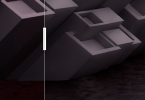what if every game going forward does this however? Is the population of AAA software poorly optimized, or are developers just taking hardware to task now. I would likely think the latter.
I think a long last gen followed by a prolonged period of cross gen has given people unrealistic expectations about how current hardware will run real next gen targetted games.


